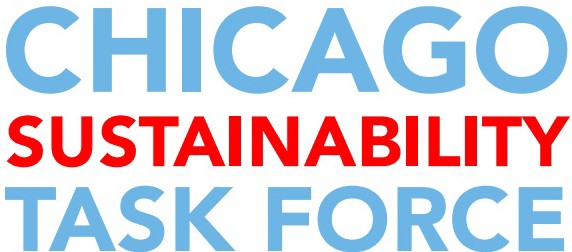Impact
The Chicago Sustainability Task Force is comprised of entities across Chicago that lead by example, interact with significant populations annually, and have great potential to influence people’s awareness of environmental impacts and waste reduction options.
Every Year…
- 95 million passengers pass through Chicago airports
- 2 million visitors attend MB Financial Park
- 5 million spectators attend Allstate Arena
- 2 million fans visit Soldier Field
- 396,000 students are taught by 41,000 people working in Chicago Public School’s 664 schools
- 29,000 students are housed at University of Illinois at Chicago
- 3 million visitors pass through McCormick Place
- 75,000 runners and 1.76 million spectators attend Bank of America’s Shamrock Shuffle & Chicago Marathon
- 20,000 residents and visitors come to the Green Music Fest
- 40 million people visit the Forest Preserves of Cook County
- Chicago Park District operates 596 parks and 11 beaches within the city boundaries
This comes to more than 136 million visitors, spectators, participants and passengers having the chance to be impacted by our environmental initiatives each year.
A sampling of Chicago Sustainability Task Force members tracked over 5420 total tons diverted from the landfill in a single year… with expanded, updated reporting to come.
49% of Chicago Public Schools increased their recycling diversion rates since February 2014. Since January 2015 the recycling rate has gone from less than 13% to more than 27%. 99% of CPS schools are recycling in some way.
Allstate Arena, home to the Chicago Sky, Chicago Wolves and Depaul Blue Demons, diverted 95 annual tons from the landfill and won the US EPA’s Gold Achievement Award for Public Venue Recycling and Food Recovery Challenge Award for their multi-faceted and impactful “Green For a Reason” program.
UIC’s College of Cycling student group has joined forces with the Food Recovery Network to deliver unused food from the cafeteria to a nearby homeless shelter weekly. Via bicycles they deliver 30-80 pounds of food that would have other wise been disposed! One month’s donations helps to serve 1500 meals.
Goose Island Brewery’s exceptional waste program that focuses on an outlet for everything utilized in their beer production has resulted in a 6-stream separation and diversion rate of more than 99% of their waste from landfills.







